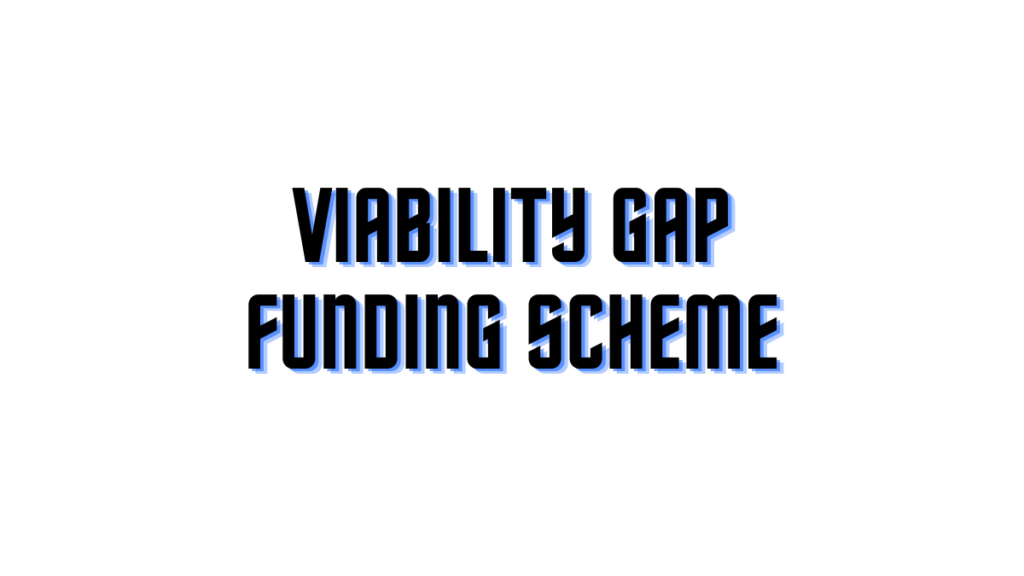
What is Viability Gap Funding Scheme How Does it Work
Viability Gap Funding Scheme: In the realm of infrastructure development and public-private partnerships, the Viability Gap Funding (VGF) scheme plays a crucial role. It’s a financial tool that helps bridge the gap between the cost of a project and the revenue it can generate, making economically challenging infrastructure projects viable. In this article, we will delve into the Viability Gap Funding scheme, exploring what it is, how it works, and its significance in fostering infrastructure growth.
Table of Contents: Viability Gap Funding Scheme
Understanding Viability Gap Funding (VGF)
Viability Gap Funding is a government initiative aimed at promoting infrastructure projects that are economically important but financially unviable. Such projects, often seen in sectors like transportation, energy, and telecommunications, may have high capital costs or insufficient revenue potential. The VGF scheme steps in to attract private sector participation in these projects by offering a financial cushion.
How Does Viability Gap Funding Work?
The functioning of the Viability Gap Funding scheme can be broken down into the following key steps:
1. Project Identification and Appraisal
The process begins with the identification of infrastructure projects that have a crucial socio-economic impact but face financial feasibility challenges. These projects are typically identified by various government departments and agencies.
Once identified, the project undergoes a rigorous appraisal process. This appraisal assesses the project’s feasibility, cost, expected revenue, and potential impact. It also determines the extent of funding required to make the project financially viable.
2. Government Commitment
After the appraisal, the government commits to providing a certain percentage of the project cost as Viability Gap Funding. This commitment is a key factor in attracting private sector investors, as it reduces their financial risk.
3. Private Sector Participation
With the government’s commitment in place, the project is put up for bidding, inviting private sector companies to participate. These companies submit proposals, including their financial and technical plans for executing the project.
4. Competitive Bidding
The competitive bidding process ensures that private sector participants offer the best possible terms and conditions for executing the project. The bid selection criteria often involve a combination of the lowest VGF requirement and the highest level of service quality.
5. Grant of Viability Gap Funding
Once the bidding process is complete, the winning bidder is granted Viability Gap Funding by the government. This funding is typically provided in the form of a capital grant, reimbursing the private sector participant for a portion of the project cost.
6. Project Implementation
With Viability Gap Funding in place, the private sector participant proceeds with project implementation. The project is executed according to the terms and conditions agreed upon during the bidding process.
7. Monitoring and Compliance
Throughout the project’s lifecycle, the government closely monitors its progress to ensure that it meets the specified quality standards and timelines. Compliance with contractual obligations is also closely scrutinized.
Significance of Viability Gap Funding
Viability Gap Funding serves several crucial purposes in the development of infrastructure projects:
- Risk Mitigation: By offering financial support, VGF reduces the financial risks associated with large-scale infrastructure projects, making them more attractive to private sector investors.
- Promotion of Public-Private Partnerships (PPPs): VGF encourages collaboration between the public and private sectors, leveraging the strengths of both to drive infrastructure development.
- Economic Growth: The VGF scheme supports the development of essential infrastructure that, in turn, spurs economic growth, creates jobs, and improves overall quality of life.
- Resource Allocation: It helps governments allocate limited resources more efficiently, focusing on projects with the greatest socio-economic impact.
- Improved Infrastructure: By making unviable projects viable, VGF contributes to the development of critical infrastructure like highways, airports, and power plants.

Conclusion: Viability Gap Funding Scheme
Viability Gap Funding Scheme: In conclusion, the Viability Gap Funding scheme is a strategic tool employed by governments to promote infrastructure development while mitigating financial risks. By attracting private sector investment into challenging projects, it fosters economic growth and the creation of essential infrastructure. As economies continue to grow and urbanize, VGF remains a valuable mechanism for addressing infrastructure gaps and improving the overall quality of life.





